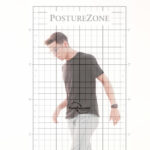Visualizing Posture When Treating Speech Therapy Pediatric Patients
Speech therapists play a crucial role in helping children develop their communication skills. Understanding and assessing the posture of pediatric patients is essential in diagnosing and treating various speech disorders. In the process of observing and analyzing their posture, valuable insights are gained into their speech production and areas that need intervention are identified.
Speech Articulation and Phonology as it Relates to Posture
Firstly, in the domain of speech articulation and phonology, we encounter children who struggle with making correct sounds. An articulation disorder occurs when a child consistently produces a sound incorrectly, while a phonological disorder involves errors in sound patterns. By assessing the posture of a child’s oral structures, including the jaw, lips, and tongue, we can identify any misalignments or muscle weaknesses that may contribute to their speech difficulties. For instance, a mispositioned tongue or insufficient lip closure can impede accurate sound production. By conducting a thorough posture assessment, we can pinpoint these specific areas and tailor our therapy interventions accordingly.
Posture and Motor Speech Disorders
Secondly, in motor speech disorders such as Childhood Apraxia of Speech (CAS) and dysarthria, posture assessment plays a vital role. CAS is characterized by difficulties in planning and coordinating the movements necessary for speech production, while dysarthria involves weakness in the muscles of the mouth, face, and respiratory system. By evaluating the overall postural stability and coordination of the child, we can determine if there are any underlying motor control issues affecting their speech. For example, observing any asymmetry, lack of jaw control, or inadequate breath support can provide valuable information for designing targeted treatment plans to improve motor speech skills.

Posture Assessment and Speech Language Therapy
Posture assessment also holds relevance in other areas of speech therapy.
Stutter or Clutter
When working with individuals who stutter or clutter, assessing their posture becomes essential in understanding the physical aspects influencing their fluency. By examining their breathing patterns, tension in the upper body, and overall postural alignment, we can identify any factors that may contribute to disfluencies. A holistic approach that integrates postural analysis with therapy techniques can facilitate improved fluency and overall communication effectiveness.
Voice Disorders
Furthermore, in the domain of voice disorders, evaluating posture is crucial. Voice disorders can arise due to various reasons, and persistent changes in vocal quality may indicate underlying issues. By collaborating with otorhinolaryngologists to rule out structural or functional causes, we can then incorporate posture assessment as part of our speech therapy sessions. Analyzing the alignment of the head, neck, and shoulders can provide insights into potential muscular tension or misalignment that might affect vocal production. By addressing these postural aspects, we can support the restoration and maintenance of a healthy voice.

Pediatric Posture Assessment as Part of Patient Evaluation
For speech language pathologists who may not already be using a grid to capture posture pictures, especially with pediatric patients, incorporating this practice can greatly benefit your therapy sessions and documentation. When working with children, it is essential to track pediatric progress and document posture changes over time to effectively monitor their development. Using a posture grid system to capture posture pictures provides a visual reference that allows you to objectively observe and compare any changes in their posture throughout the course of the intervention. This method not only helps in identifying areas of improvement or areas that require further attention but also enables you to communicate these changes to parents and other healthcare professionals involved in the child’s care. By implementing a consistent grid-based posture assessment, you can enhance the accuracy and reliability of your documentation, leading to better-informed decision-making and improved outcomes for your patients.
SLPs Using Images to Collaborate with Parents
Visual imagery, such as a posture picture, is a powerful tool for relaying findings, successes, and declines to parents in speech therapy. As SLPs, we understand that parents play a crucial role in their child’s progress, and clear communication is vital in keeping them informed and engaged in the therapeutic process. By sharing posture pictures with parents, we can provide a tangible representation of their child’s posture and physical changes over time.
These visual images serve as a concrete evidence of the progress made during sessions, illustrating the effectiveness of interventions and highlighting the milestones achieved. Moreover, in cases where a decline or plateau in progress occurs, posture pictures can help parents understand the specific challenges their child is facing. This visual documentation fosters a deeper understanding and empowers parents to actively participate in their child’s therapy, as they can clearly see the impact of treatment strategies and make more informed decisions regarding their child’s care. By leveraging the power of visual imagery, we create a shared language with parents, facilitating open discussions and collaborative efforts to optimize the speech therapy journey for their child.
Resources:
- Posture grids commonly used with speech language therapy practices are available from BodyZone and PostureZone. These companies work with therapists, pathologists and hospitals worldwide providing posture related supplies.
- Posturographic analysis in patients with dysfunctional dysphonia before and after speech therapy/rehabilitation treatment
- Coordination between Posture and Phonation in Vocal Effort Behavior























